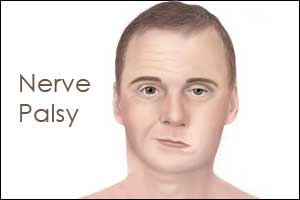- Home
- Editorial
- News
- Practice Guidelines
- Anesthesiology Guidelines
- Cancer Guidelines
- Cardiac Sciences Guidelines
- Critical Care Guidelines
- Dentistry Guidelines
- Dermatology Guidelines
- Diabetes and Endo Guidelines
- Diagnostics Guidelines
- ENT Guidelines
- Featured Practice Guidelines
- Gastroenterology Guidelines
- Geriatrics Guidelines
- Medicine Guidelines
- Nephrology Guidelines
- Neurosciences Guidelines
- Obs and Gynae Guidelines
- Ophthalmology Guidelines
- Orthopaedics Guidelines
- Paediatrics Guidelines
- Psychiatry Guidelines
- Pulmonology Guidelines
- Radiology Guidelines
- Surgery Guidelines
- Urology Guidelines
Case of Benign Recurrent Sixth Nerve Palsy in a Child

A case of Benign Recurrent Sixth Nerve Palsy in a Child has been reported by Rita Gonçalves at Hospital Pedro Hispano, Matosinhos, Portugal and colleagues and has appeared in Case Reports in Ophthalmological Medicine.
A previously healthy four-year-old girl was presented to emergency room with complaints of binocular horizontal diplopia of sudden onset and strabismus. Ophthalmological examination revealed an esotropia of the left eye in the primary position, with marked abduction deficit, no palpebral fissure changes, and a vicious position of the head (left head turn). Visual acuity was normal and was no significant refractive error on cycloplegic refraction for her age. Fundus examination was normal with no evidence of papilledema. One week prior to the event, the child had a history of a fever and productive cough, and she was under treatment with amoxicillin. There was no history of live attenuated vaccine administration in the previous days. At admission, she was apyretic and hemodynamically stable and without any signs of active infectious disease. Neurological examination was unremarkable except the cranial nerve palsy.
From the additional workout, a lumbar puncture was performed, with a normal opening pressure, and cerebrospinal fluid (CSF) analysis revealed normal features. Urgent magnetic resonance imaging (MRI) and angiography of the brain were performed and demonstrated the absence of intracranial and orbital lesions.
A diagnosis of isolated left 6th nerve palsy was made and, in order to obtain symptomatic relief, 24-hour alternate eye patching was started.
The child was discharged with the indication to keep alternate eye patching to prevent amblyopia and muscular fibrosis. Two months after the initial presentation, complete and spontaneous resolution was observed, with normal oculomotor balance.
For more details click on the link: https://doi.org/10.1155/2017/8276256

Disclaimer: This site is primarily intended for healthcare professionals. Any content/information on this website does not replace the advice of medical and/or health professionals and should not be construed as medical/diagnostic advice/endorsement or prescription. Use of this site is subject to our terms of use, privacy policy, advertisement policy. © 2020 Minerva Medical Treatment Pvt Ltd